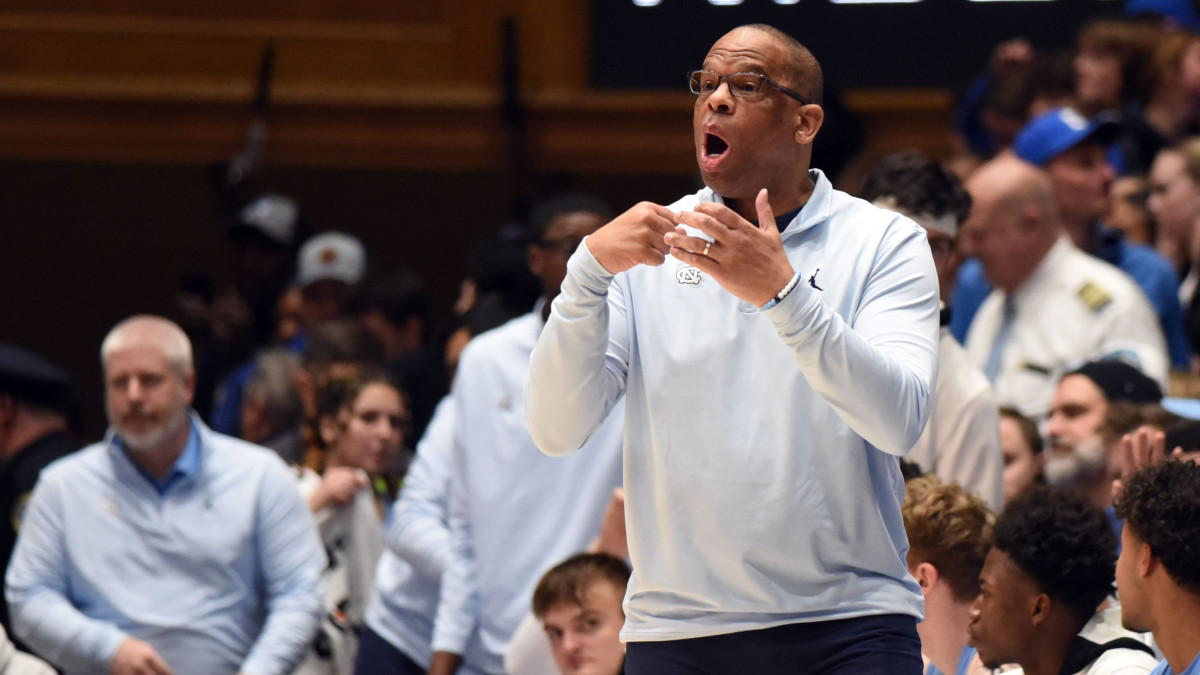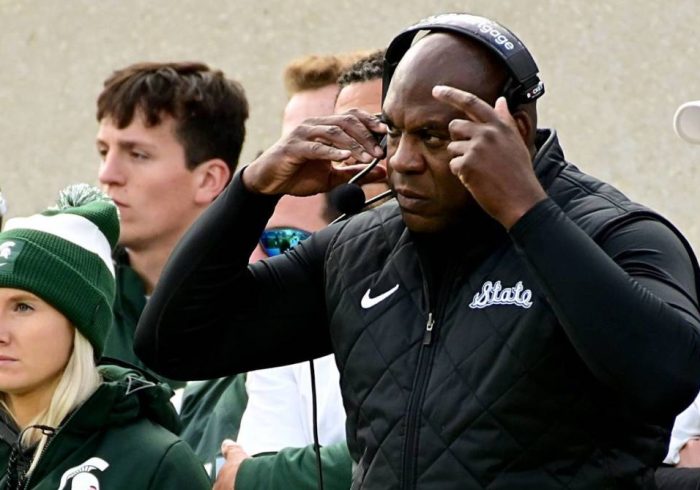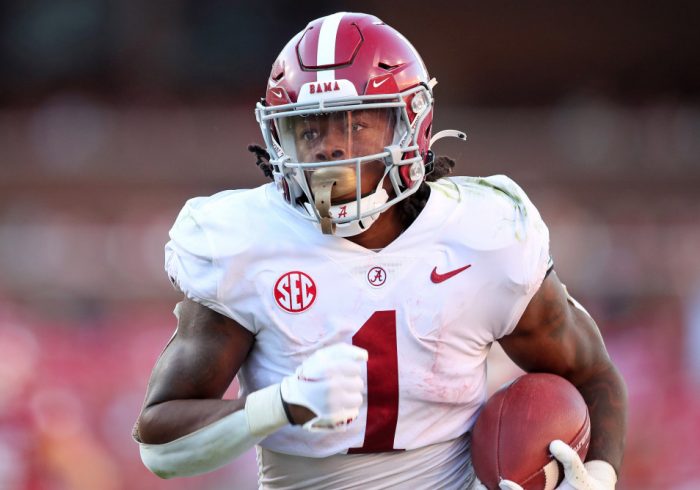Good morning, I’m Dan Gartland. March Madness is a lot closer than you might realize.
In today’s SI:AM:
🔴 Alabama’s coach has made a tragedy even worse
💯 SI’s new world golf rankings
If you’re reading this on SI.com, you can sign up to get this free newsletter in your inbox each weekday at SI.com/newsletters.
Who’s in? Who’s out?
With less than three weeks remaining before Selection Sunday, the teams on the men’s NCAA tournament bubble are running out of time to bolster their résumés.
Kevin Sweeney published his latest Bracket Watch yesterday, with projected seeds for the full 68-team tournament and also, more interestingly, his list of teams that are teetering on the edge:
- Last four byes: Missouri, Oklahoma State, Boise State, West Virginia
- Last four in: Memphis, Mississippi State, USC, Wisconsin
- First four out: New Mexico, Seton Hall, North Carolina, North Texas
- Next four out: Penn State, Utah State, Texas Tech, Clemson
The most interesting bubble team has to be North Carolina. The Tar Heels made it all the way to the national championship game last year but are in serious danger of missing out on March Madness entirely this season after being ranked No. 1 in the preseason AP poll. Carolina is 16–11 (8–8 in the ACC) but is a dismal 0–8 in Quad 1 games—the tough matchups that the selection committee points to when filling out the field. The latest disappointing loss came Sunday in Raleigh against NC State. The game was tied at 60 with six minutes left before the Wolfpack went on a 9–0 run that sealed the game.
The Tar Heels play a lousy Notre Dame team (2–14 in conference play) tonight in South Bend. If they lose, they can probably kiss their at-large tournament hopes goodbye. Even if they win, with only three regular-season games left after tonight, Carolina’s opportunities to impress the committee are dwindling.
“UNC will need to beat at least one—and likely both—Virginia and Duke down the stretch to go dancing,” Sweeney writes. While neither of those games will be easy, at least they’re both in Chapel Hill, where they’re 11–2 this season. The Tar Heels face the the No. 6 Cavaliers on Saturday and close out the regular season against the Blue Devils on March 4.
New Mexico also has an interesting bubble case. The Lobos were a sure bet to make the tournament before dropping four straight earlier this month, but they might be left on the outside looking in if they don’t finish strong. Their résumé includes impressive road wins against Saint Mary’s and San Diego State, but they’ll need to finish strong to punch their ticket. Fortunately, they have two games left against teams that Sweeney has headed to the tournament: tonight on the road against Boise State and Saturday against San Diego State.
It’ll also be worth watching how the committee handles the Big 12 bloodbath. There’s a real chance that nine of the conference’s 10 teams will make the tournament. (Sorry, Oklahoma, despite the Sooners’ dismantling over No. 2 Alabama last month.) Sweeney has six teams from the conference solidly in the field of 68, with West Virginia and Oklahoma State on the right side of the bubble and Texas Tech on the wrong side of it. The good news for the Mountaineers, Cowboys and Red Raiders is that there are no easy games in the Big 12, so they’ll have plenty of opportunities to impress the committee over the remainder of the regular season and into the conference tournament. The bad news is that there are no easy games in the Big 12, so they risk finishing with a thud and making it easy for the committee to dismiss them.
As for the rest of the field, the committee released its first ranking of the top 16 teams Saturday, with Alabama at No. 1. The list featured five Big 12 teams in the top 12, so the committee clearly has a lot of respect for the conference, which could bode well for its bubble teams. Two Big East teams (Marquette and Xavier) made the list, but UConn didn’t, despite the Huskies’ being No. 6 in the KenPom rankings. The list is a nice preview of what the final bracket could look like, but luckily we have to wait only three more weeks to see the real thing.
The best of Sports Illustrated
The top five…
… things I saw yesterday:
5. The ridiculously high winds that delayed the Baylor men’s golf team’s tournament in Southern California.
4. Mississippi State freshman Shawn Jones Jr.’s chasedown block.
3. Patrick Kane’s near buzzer beater in overtime against the Golden Knights. It was overturned on review, but the Blackhawks won in a shootout.
2. Luka Modrić’s free kick delivery to set up Éder Militão’s go-ahead goal for Real Madrid against Liverpool.
1. Terry Francona’s comedy of errors before his speech to the Guardians.
SIQ
Where did Auburn and Alabama play the first Iron Bowl on this day in 1893?
- Auburn
- Tuscaloosa
- Montgomery
- Birmingham
Yesterday’s SIQ: Which two countries competed in the first recorded biathlon competition in 1767?
- Canada and the United States
- Russia and Finland
- France and Prussia
- Sweden and Norway
Answer: Sweden and Norway. The sport has its origins in Norse mythology, with the god Ullr being the god of both skiing and hunting. Militaries in Scandinavia deployed units on skis, leading to the development of ski-shooting competitions.
The first such competition to be part of the Olympics was called “military patrol” at the 1924 Games in Chamonix, France. It was also featured as a demonstration sport at three more Olympics. But that team-based event was significantly different from the current sport of biathlon.
Today there are five different Olympic biathlon events for both men and women, plus a mixed relay event. But there was only one when the sport debuted for men in 1960. (The first women’s Olympic biathlon was in ’92.) Sweden’s Klas Lestander won the first gold, Finland’s Antti Tyrväinen won silver and the Soviet Union’s Aleksandr Privalov got bronze. Europe’s dominance over the event has continued today. Of the 288 medals handed out in the event, 284 have gone to Europeans.



